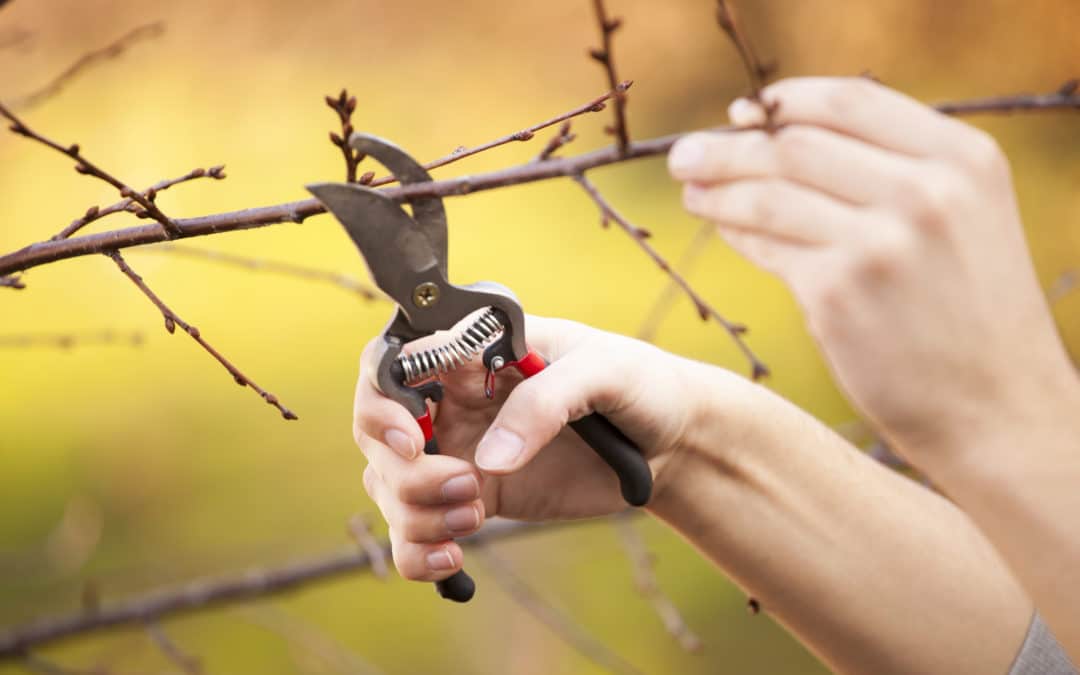Spring blooms on trees and shrubs bring life back to landscaping that has been dormant during the winter months. The lush greens of summer eventually give way to gorgeous colors of fall. Eventually those colors fade and the leaves drop. When the leaves have dropped, pruning trees in the fall offers various benefits. However, the key to success with this chore is following a few important pruning tips.
Benefits of Pruning Trees and Shrubs
Fall pruning and tree trimming provides several benefits. Improving and maintaining the health of the trees is the top benefit and most common reason for pruning. Experts from the University of Minnesota Extension state that for the health of the trees, prune to remove branch stubs or branches that rub together. Removing dead or dying branches is essential as well.
The natural health benefits shrubs and trees experience from proper pruning is just one benefit. Others include:
- Encourages growth plus the development of flowers and fruit
- Improves aesthetics
- Helps keep people, pets, and property safe
Overgrown shrubs and trees not only look unsightly, but pose potential dangers. When they’re overgrown or misshapen, they hide the home. Keeping the landscaping nearest the home trimmed not only improves curb appeal but it can help to deter criminals. Overgrowth or dead/dying limbs may fall, injuring people and pets. Dead/dying limbs also can break windows and cause other damage to the home as well.
Tree Pruning Basics
Pruning cuts need to follow certain rules. One thing to remember is that trees shouldn’t be “topped”, which is when large branches are removed only from the top leaving stubs. This can affect the tree’s health and destroys its natural shape. Topping is not the same as thinning. Thinning removes selected branches, usually on younger trees, just throughout the crown to improve health and growth. Thin to remove the weaker branches.
Raising is the opposite. It removes lower branches usually on older, mature trees. Raising keeps the limbs of older trees from crowding walkways and allows for more space under the tree. Removal cuts eliminate dead, dying, damaged, and insect infested limbs as needed and where needed.
Tip: Make cuts close to a node and always at an angle. According to Oregon State University, branches grow only at these nodes, and if you leave too long a stub beyond the node, the stub will die and rot.
Busting Two Tree Pruning Myths
The Oregon Department of Forestry presents many tips and advice for how to care for the different trees on your property. In addition, they bust the following tree pruning myths:
- Cutting branches flush to the trunk is best: Myth
- Pruning wounds heal best when painted: Myth
Both of these myths are in fact false. According to the Oregon Department of Forestry, if you cut the branches flush with the trunk, the tree can’t use its natural chemicals to close the wound and this can lead to decay. If you paint the wound the dressing on the pruning cuts, the tree’s healing process is slowed.
Time to Prune
Late fall and winter pruning are good times for tree and shrub pruning. The dormant season offers an a good time for pruning because there usually are no (or very few) leaves. With the leaves gone, it’s easier to see the tree’s structure and make the best decisions for how and where to prune.
Pruning can require equipment like a safety ladder, pole pruner, pruning shears, long-handle loppers, and a hand saw. This chore also means understanding the best cuts for your trees and how to make those cuts. Pruning decisions can help or hurt a tree. Fortunately, you don’t have to go it alone. When you think the time has arrived for pruning, consider calling on professionals who know how to safely and correctly tackle the cuts that are best for each plant.

